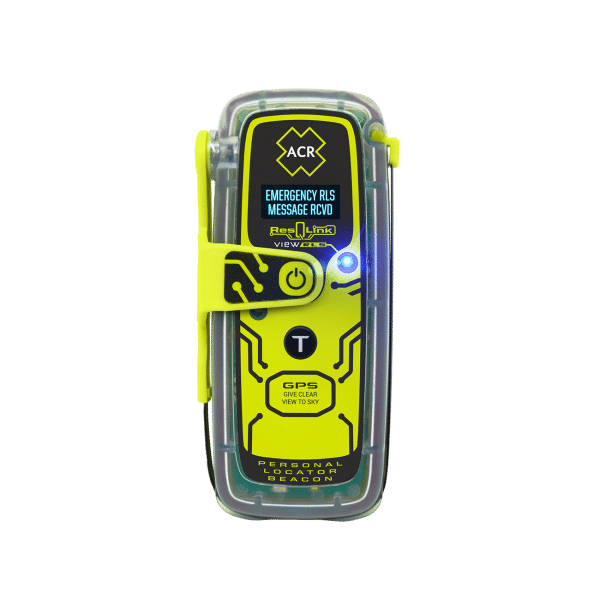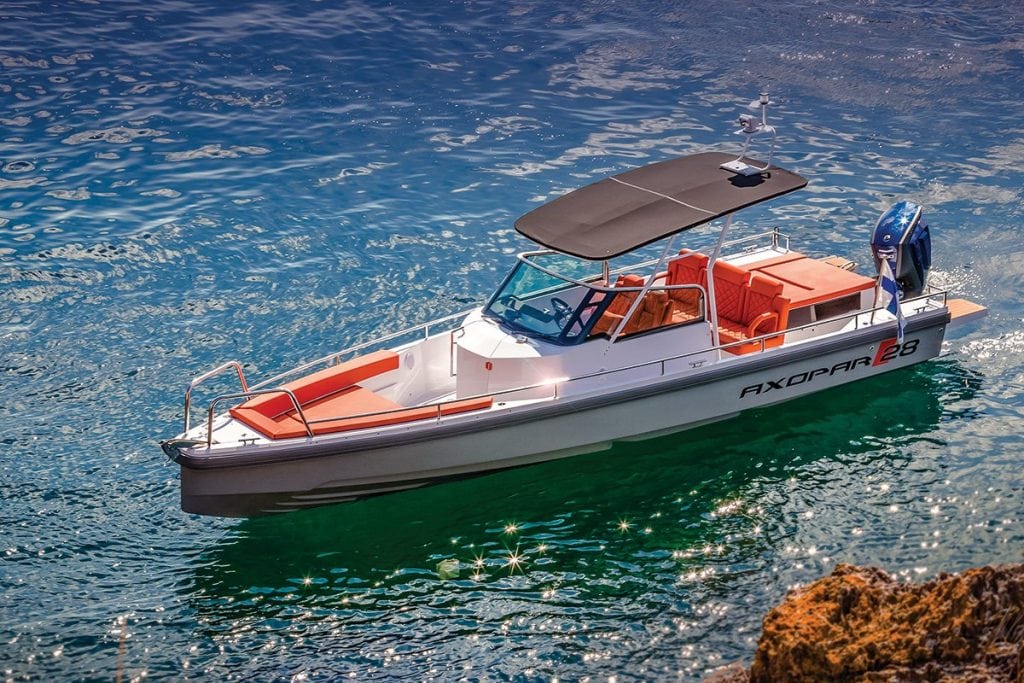Time Counts
ACR and Ocean Signal develop the next generation EPIRB.
There are many sailors who appreciate the lifesaving technology of Emergency Position Indication Radio Beacon (EPIRB) devices. Without it, their rescue may have turned out quite differently.
EPIRBS, as most know, transmit a 406 MHz distress signal via the Cospas-Sarsat satellite system to contact global rescue services. A GPS-enabled EPIRB gives rescue services
a location within approximately 330 feet on the first satellite capture. However, it takes time, sometimes an hour or more, before rescue units can reach the distress signal with the effects of weather, distance from a Coast Guard station, and whether the rescue crew is immediately available and not on another call. In most cases, the Coast Guard will employ VHF radio, Automatic Identification System (AIS), and other methods to find a vessel in the vicinity for a quicker response.
Adding AIS
With that in mind, ACR Electronics and Ocean Signal have developed the next generation EPIRBs that significantly enhance the chance of rescue in an emergency: the addition of AIS within their EPIRBs. What this does is notify rescue services through the 406 MHz distress signal via the satellite system as well as send a signal through the AIS to all vessels and aircraft equipped with AIS in the vicinity which can shorten the response time tremendously.
ACR and Ocean Signal have launched the advanced beacons in conjuction with the enforcement of new updated International Maritime Organization (IMO) Maritime Safety Committee EPIRB regulations. As of July 1st, the new IMO rules state that vessels under SOLAS regulations will have to fit a new EPIRB with an internal AIS locating signal and an internal GNSS receiver, along with the 406 MHz and 121.5 MHz transmitters, when current devices are due for replacement. ACR comments that recreational boats and other non-SOLAS vessels can continue to install the EPIRBs permitted under their national regulations, but many countries are expected to enforce the IMO AIS EPIRB mandate in the next one to two years due to the lifesaving benefits of the new beacons.
The purpose of the internal GNSS receiver (under SOLAS regulations) is to improve the accuracy of the location provided to the rescue services. An infrared light as well as a visible light are also required to facilitate rescue in poor visibility or at night.
Other Rescue Devices
ACR also has received approval for its new ResQLink Personal Locator Beacons (PLB) with Return Link Service for operation in the U.S. The ResQLink View RLS has the capability to provide the user with a confirmation message verifying that the Cospas-Sarsat satellite system received the distress message and location. The ResQLink 410 RLS has a confirmation light to indicate that the signal was received.
The two small, but resilient RLS-equipped PLBs offer two-way confirmation and incorporate a multi-constellation receiver that utilizes both the Galileo and GPS satellite systems, including the new MEOSAR. The beacons send a signal that rescuers can detect within five minutes and 328 feet of its location.
Whether boating, hiking, hunting, flying, or participating in any outdoor activity, knowing that a distress call was received offers some peace of mind that help is on the way. acrartex.com















